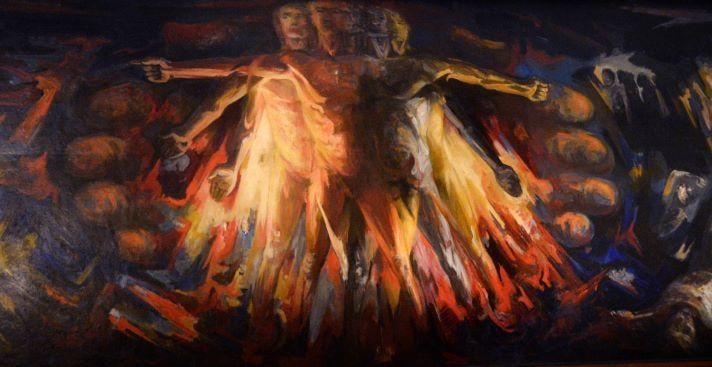Benito Messeguer's mural The Human Creation and the Economy
Benito Messeguer (1927-1982) was 35 when he began painting La creación humana y la economia in the Narciso Bassols Auditorium of the Faculty of Economics at the UNAM. He finished it in October 1963.





